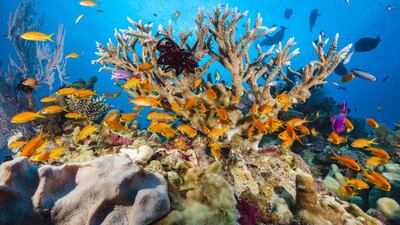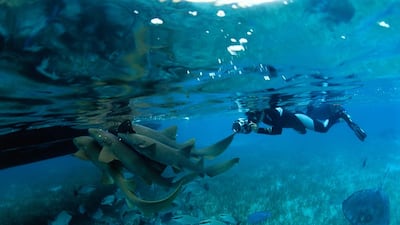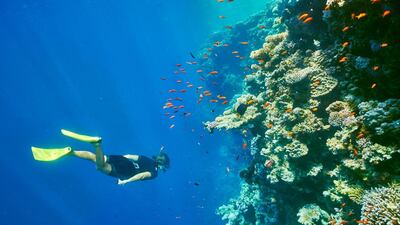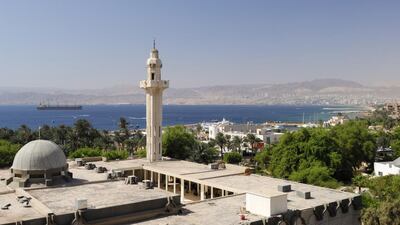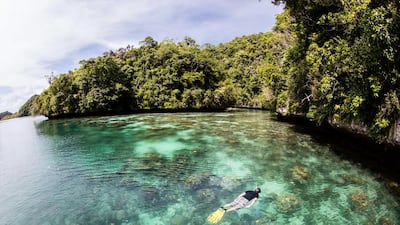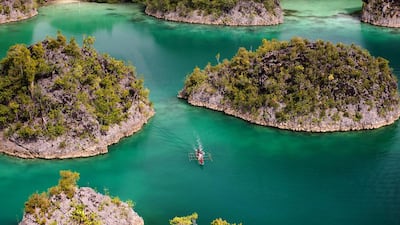Nothing beats cooling off in the sea on a hot day. Apart from maybe exploring an underwater wonderland of multi-coloured coral and swarming fish while doing so. But some places are more memorable for snorkelling than others – and we have picked out six of the most incredible spots around the world.
Great Barrier Reef, Australia
Stretching nearly 3,000 kilometres and made up of almost 3,000 individual reefs, the “great” part of the Great Barrier Reef’s name definitely isn’t sarcastic. And while much-publicised recent bleaching events have caused concerns for the future of the biggest reef on Earth, snorkelling on it is still one of the most magical experiences imaginable.
There are several island resorts on the reef – Lady Elliot and Heron islands at the southern end are farther from the mainland and have colder water temperatures, but the coral is in rude health there. Most visitors, however, will visit from Cairns or Port Douglas at the northern end.
For nervy beginners, the Quicksilver (www.quicksilver-cruises.com) cruise from Port Douglas is a major winner. It heads out on a stable catamaran to a large pontoon on the Agincourt 3 Reef. From there, semi-submersible boats do underwater viewings, but snorkellers heading in the other direction are treated to electric-blue staghorn coral, garishly patterned parrot fish, huge shoals, inquisitive turtles and intimidatingly humungous clams. Tickets cost 252.50 Australian dollars (Dh691).
Ambergris Caye, Belize
The largest barrier reef outside Australia is in the Caribbean, and although it doesn’t hold a candle to the Great Barrier Reef in terms of biodiversity, it still has a series of impressive snorkelling spots. Various sites in Mexico (Isla Holbox is arguably the best bet), Honduras (from the island of Roatán) and Belize duke it out for top billing.
Ambergris Caye in Belize wins out thanks to its proximity to the Hol Chan Marine Reserve. The crucial thing here – apart from the shallow waters ideally suited to snorkelling – is the variety of habitats. The reef itself is complemented by big seagrass beds, which are particularly popular with turtles, and mangrove forests. The latter aren’t ideal for snorkelling around, but they act as important nurseries for young fish, keeping stocks on the reef itself at eye-candy levels.
Next to Hol Chan is the unimaginatively named Shark Ray Alley, which wouldn't be all that exciting if not for the – you guessed it – sharks and rays that hang out there. The former, mercifully, aren't of the surfer-eating variety. Ambergris Divers (www.ambergrisdivers.com) runs half-day trips that cost from US$45 (Dh165), as well as night snorkelling trips for $65 (Dh239).
Dahab, Egypt
There are good snorkelling spots all the way down Egypt’s Red Sea coast, with Sharm El Sheikh being the prime destination for those wanting to head out on a boat and gawp at the marine life. Proximity to the Ras Muhammad National Park is a major plus point in Sharm – it has been protected as a marine reserve since 1983 and is home to more than 200 species of coral.
But go farther north to Dahab, and you’re likely to be sharing the aquatic magic with far fewer people. A much more chilled-out base, Dahab tends to be where people base themselves purely for diving and snorkelling, rather than doing it as an option one-day among other things from Sharm. It also tends to be considerably cheaper.
The prime site near Dahab is the Blue Hole, where a sheer, 100-metre drop-off in the coral wall brings together the smaller fry of the reef system and the bigger ocean-dwellers looking for snacks at the edge of their territory. Viator (www.viator.com) offers a variety of snorkelling tours from Dahab operators, with prices starting from $12 (Dh44) to head to the Blue Hole.
Aqaba, Jordan
Snorkelling from the Jordanian Red Sea resort has two major advantages. The first is that the dive industry started relatively late here, so good practices came in from the start rather than having years of over-enthusiastic reef damage. The coral is in excellent condition and a good chunk of the coast is protected as a marine park. The second is that for roughly 20km between Aqaba and the border with Saudi Arabia, the beaches are at a gentle gradient, allowing you to swim out to the reef without the need to get on a boat. However, if you do decide to venture farther out, Sinai Divers (www.sinaidivers.com) runs small boat snorkelling trips from the Mövenpick Resort for 45 Jordanian dinars (Dh233).
Impressive variety just below the water’s surface means that you’re as likely to see clown fish as seahorses, masked butterfly fish and octopus.
Palau
This tiny independent island nation in Micronesia has long been at the top of most divers’ bucket lists, and for very good reason. The entire country is surrounded by a lagoon, 80 per cent of its waters have been declared a marine sanctuary, while the remaining 20 per cent allows for only limited local fishing.
More than 200 heavily forested limestone islands make up the archipelago, surrounded by the sort of pristine clear waters that coral just loves to grow in.
Most of the key dive sites are close to the surface, which makes Palau spectacular for snorkelling – with A-grade visibility, excellent coral health and impressive bio-diversity. There are also some jaw-dropping underwater walls where you can easily find yourself swimming alongside reef shark, humungous fish and maybe even dugongs.
Most operators are dive-orientated, but Fish N Fins (www.fishnfins.com) runs a day-long Rock Islands trip to snorkeller-friendly sites for $125 (Dh459).
Raja Ampat Islands, Indonesia
Roughly between the Philippines, Timor-Leste and New Guinea, the so-called “Coral Triangle” hogs several of the world’s most impressive diving and snorkelling sites. Picking the best is a mug’s game, although the Raja Ampat Islands off West Papua is in with a strong shout.
Largely ignored until a few years ago, the reefs around the islands have staggering diversity for a region so small. About 540 species of coral mix with burgeoning fish stocks, and there are several species that weren’t known to exist until a few years ago. Lack of development means water quality is largely unaffected by run-off, while wobbegong sharks, manta rays and dugongs await once mask and fins are donned. LiveAboard.com has a series of live-aboard cruises around Indonesia that call at Raja Ampat, with prices from $218 (Dh801) per day.
